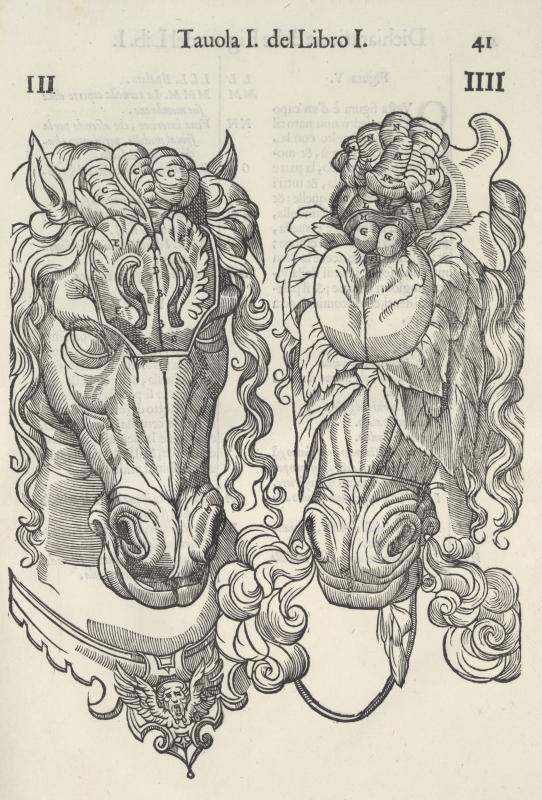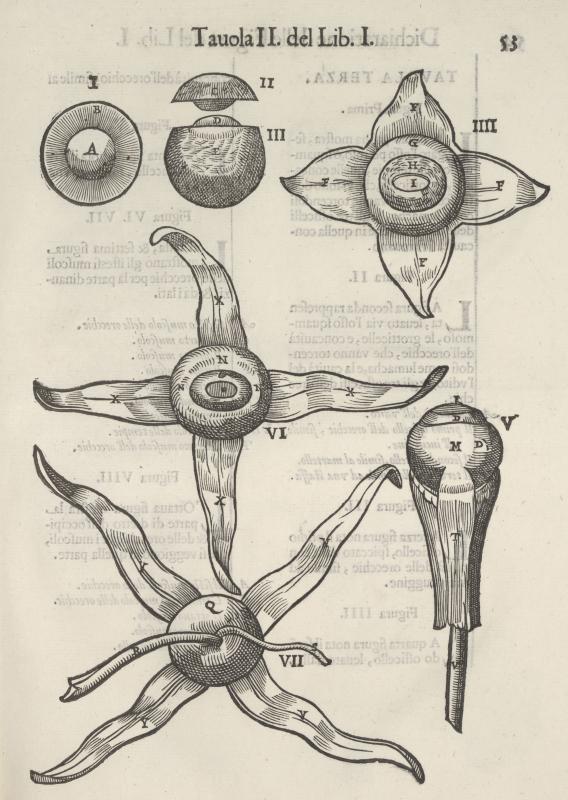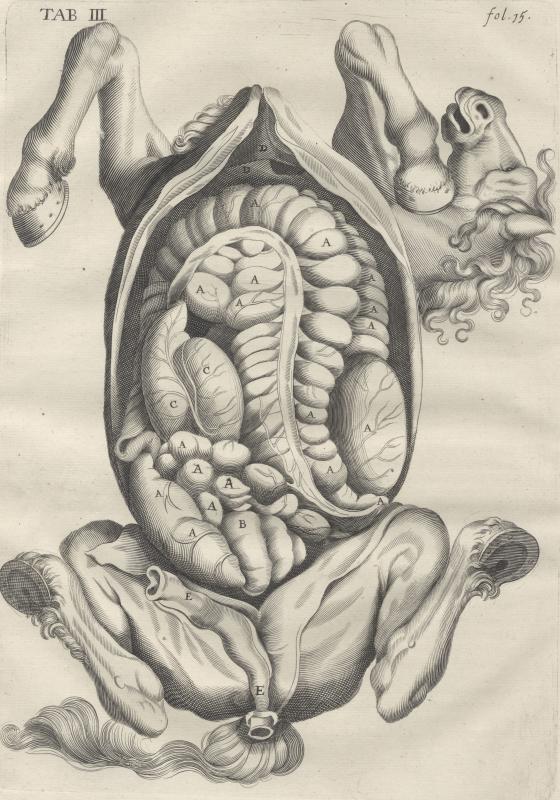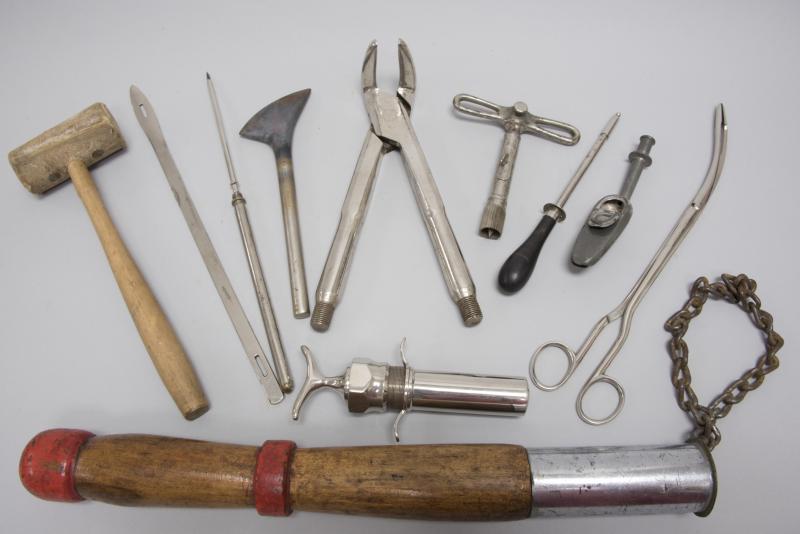The History of Equine Anatomy in Veterinary Medicine
The horse is one of the most important domestic animals in human history, and their health and care is a foundation of veterinary medicine. Equine anatomy has long been a closely studied subject by veterinary practitioners, farmers, farriers, and even artists. This exhibit highlights some of the interesting and important items on equine anatomy that are available from the Michigan State University Libraries' Stephen O. Murray and Keelung Hong Special Collections.
The historical veterinary medical collection began long before the first classes leading to a doctor’s degree in veterinary medicine were inaugurated in East Lansing in 1920. In 1957 Dr. J. Fred Smithcors, Professor of Anatomy in the college and veterinary historian, acquired the distinguished Beaudette Collection of some 250 rare books, incunabula, and manuscripts. Since this acquisition the collection has continued to grow and is now, at over 1500 items, one of the largest and distinguished collections of books from the history of veterinary medicine.
- Dell'anotomia et dell'infirmita del cavallo, Carlo Ruini, 1598
- Carlo Ruini is often regarded as the father of equine anatomy and his treatise on the anatomy and diseases of the horse and their treatment as the foundation of modern veterinary medicine. Dell'anotomia et dell'infirmita del cavallo is the first book devoted exclusively to the structure of a single species other than man. Ruini's illustrations are of such high quality that they are sometimes attributed to Leonardo da Vinci.
- Anatomy of an horse, Andrew Snape, 1683
- Andrew Snape's Anatomy of an horse is one of the first books in English on equine anatomy.
- 18th and 19th Century Veterinary Instruments
- The 18th and 19th century veterinary instruments included in this exhibit are on loan to the MSU College of Veterinary Medicine from the Wisconsin Veterinary Medical Association's "Turn of the Century Museum" at the Galloway House and Village, Fond du Lac, WI. Permission was generously granted from Fred Born, DVM, for their inclusion in this exhibit.
- For more information about the collection on display at MSU CVM, please see http://bit.ly/CVMcollection.





